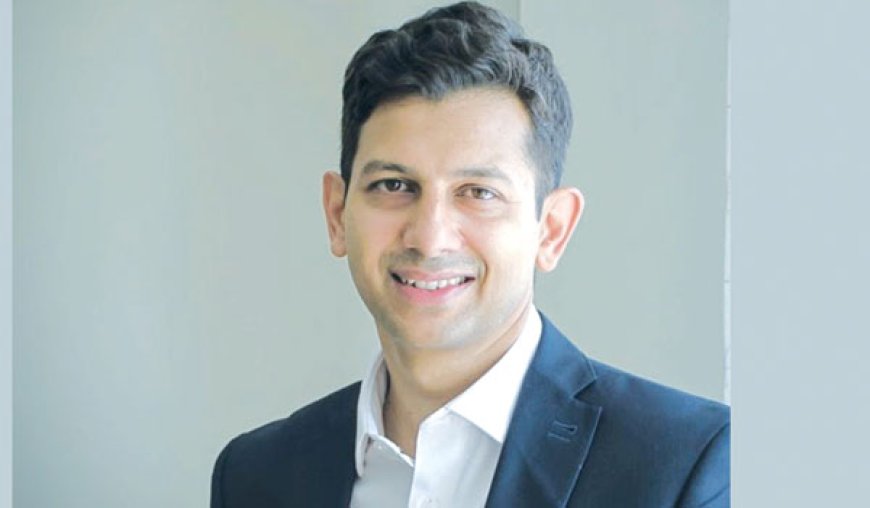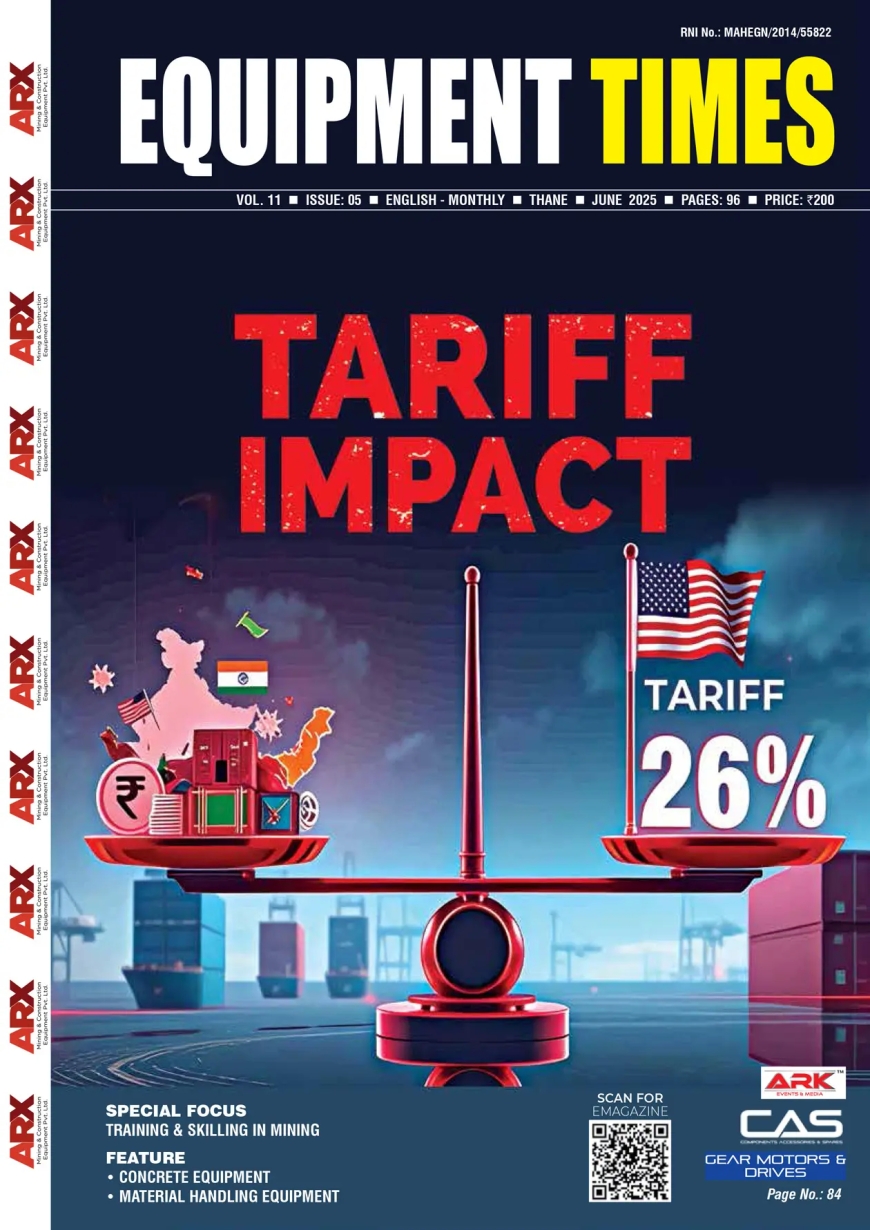Our scope extends far beyond mere engine sales, encompassing comprehensive solutions.
Let’s talk about our tagline: “Together, we power ahead”, this replaces the famous tagline ‘The heart of every great machine’ that has served us well for so long.

Can you tell us some features about products that have been showcased here?
Our focus on the CPCB4 plus engine norms is pivotal given India’s transition from CPCB2 to CPCB4. This shift marks a significant stride in our commitment to the Indian market, aligning with the present necessity. The essence lies in our move towards cleaner, more sustainable energy emissions expected by 2024, mandating every engine manufacturer’s compliance. This transition aims to achieve a 90% reduction in particulate matter (PM) and harmful nitrogen oxides (NOx) concentrations in genset exhaust, surpassing the existing CPCB II standards. This underscores our dedication to fostering a more sustainable environment and energy landscape.
The journey towards achieving these norms necessitates a technologically advanced product, demanding extensive research and development efforts. Among the limited pool of manufacturers, Perkins stands out due to our global expertise and extensive experience in diesel engines. The launch of the CPCB4 plus compliant engine emerges as a pivotal product highlight for us at Excon, reflecting our commitment to innovation.
Furthermore, our display of industrial diesel engines underscores our success in supplying thousands of these engines to Indian OEMs, subsequently exported to more than 76 countries. This stands as a testament to our technological prowess. While Perkins enjoys global recognition, our growth trajectory in India remains a work in progress, presenting ample opportunities for expansion, particularly in sectors involving the manufacturing of products within India for global export.
As we are talking about the product norms, momentum shift is slowly towards electric products from the manufacturers to design new engines which can give more support to electric production. Can you throw some light on that?
Let’s talk about our tagline: “Together, we power ahead”, this replaces the famous tagline ‘The heart of every great machine’ that has served us well for so long. The new Perkins tagline is focused on the future and highlights how Perkins is mastering a changing world by uniting with customers to tackle some of the greatest challenges facing human progress. The world’s transition to a lower-carbon future is driving our customers to solve problems in dramatically different and often more complicated ways than they have faced in the past, and many of the industries we support are increasingly preparing for the energy transition. So, Perkins is transforming to help them solve those problems and drive their sustainability journey forward.
Our current engine models are designed for sustainability, utilizing HVO (Hydro Treated Vegetable Oil), biodiesel up to B20, and we’re actively engaged in the development of hydrogen fuel solutions.
How do you ensure durability and reliability of your engines, especially for the heavy equipment?
These engines boast extensive testing, surpassing 10,000 operational hours for each designated application. Speaking specifically about performance, let me illustrate with the 4000 Series engine manufactured in Aurangabad, India. This particular series stands as a testament to reliability and performance, holding the position of being the largest consumer of the 4000 series engines in India and globally. Our prowess lies in operating two cutting-edge facilities, located in Hosur and Aurangabad, which have produced and sold thousands of engines, each renowned for their exceptional quality. This track record instills in us unwavering confidence in both the product’s performance and the solutions we offer.
Which is the bigger market apart from India that you export to?
In Aurangabad and Hosur, we operate as engine manufacturing facilities, serving as the backbone of our company’s production. These facilities play a crucial role in our global reach, exporting our engines to numerous OEMs and companies worldwide.
The high performing diesel industrial engines are exported globally through our OEM customers. Specifically talking about Gensets exports, it’s important to highlight our relationship with two key GOEMs – Supernova Engineers ltd and Captiva Energy Solutions who are integral collaborators in our supply chain. These GOEMs procure engines from us, utilizing our high-quality products as components in their assembly process. Subsequently, these assembled engines are exported to various countries, facilitating not only domestic but extensive international trade as well.
What are your initiatives in training and skilling as there is change in technology constantly?
As you’ve highlighted, while diesel technology isn’t novel in the industry, the imperative for training and upskilling couldn’t be more apparent. Our approach involves a program known as PEST (Perkins Engines Sales Training), a recurring initiative conducted annually and as needed. These sessions take place within our manufacturing facilities, drawing in customers, distributors, and new team members. Tailored content is crafted to effectively educate both newcomers and seasoned professionals. Given the ever-evolving nature of technology, continuous learning and skill enhancement remain paramount. Our program is meticulously structured and thoughtfully planned to cater to all industry users leveraging our products.
How do you stay updated with the technological trends and advancements that are happening compared to the competitors?
The introduction of CPCB4 plus marks a significant shift, putting us all on a level playing field. Achieving this milestone and navigating it varies from company to company, each with its own unique perspective. At Perkins, we bring a wealth of experience, particularly in technology tailored to meet stringent emission norms. This journey isn’t a simple one; for context, CPCB2 was the previous benchmark, and by skipping CPCB3, we bypassed an entire phase of meeting these norms. It underscores the complexity of complying with emission standards. Successfully meeting these norms demands substantial technological advancements and substantial investment in R&D—areas where we’ve dedicated our efforts. Our depth of knowledge and expertise in this domain positions us to serve the industry with excellence.
How do you look at growth for Perkins in next 3 – 5 years?
In the realm of electrical power and industrial engines, we’ve been witnessing substantial growth, particularly in the export sector. As you rightly pointed out, India grapples with an energy deficit, particularly in power. Consequently, the demand for gensets in the 2000 and 4000 series engines power bands is consistently on the rise. Notably, the data center industry is experiencing significant expansion, marked by substantial investments.
Hits: 12








